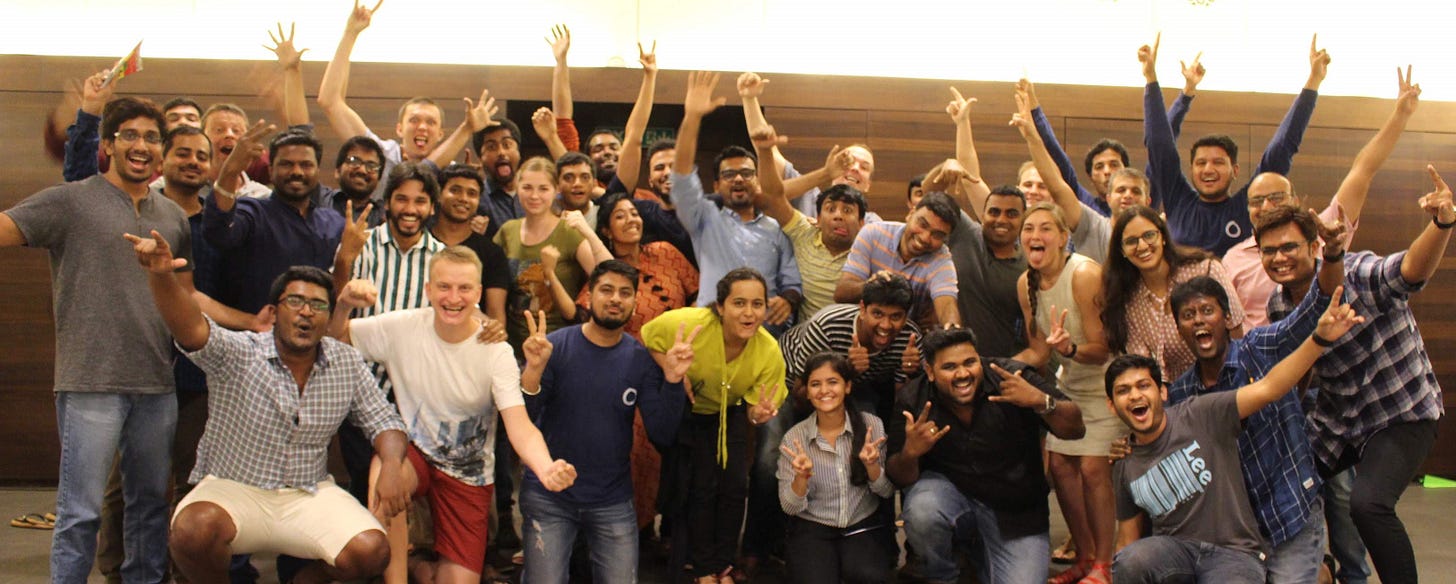Opex Analytics History (Part 2)- The People
We had about 140 employees when LLamasoft acquired us in late 2019. I think most of them are in the two pictures above. These were from our two summer meetings— one in the US and one in India.
In one sense, almost everyone was a data scientist. Within that broad category, we had a lot of different skills.
As we built the team, there are a few lessons we learned about different skills.
First, for the science and algorithm work, we had both machine learning experts along with optimization. A lot of data science teams don’t emphasize the optimization skills. This can be a big gap. The field of optimization has been around for a long time and has a nice way to formulate problems and create algorithms that make different kinds of recommendations than machine learning. When this is complimented by all that machine learning can bring to the table, it gave us the flexibility to solve a wide range of problems. (I’ll write more about this combination later.)
Second, to make the science team effective, you need data scientists with a wide range of other skills like data engineering, project management, product management, and subject matter expertise (like in supply chain, inventory, or pricing).
Third, software developers are an important part of the equation. For a lasting impact, many data science projects need to turn into software. We had a full-stack development team. We built our own product and helped our clients build products.
Fourth, we were probably a bit light on internal operations when we were purchased. I’m not sure we could have stayed that light if we had continued to grow. But, we had people keeping the office going, keeping the culture going, keeping the money getting to the right place, recruiting, and marketing. We hadn’t gotten around to building an enterprise sales team by the time we were acquired. The leaders of Opex did all the selling.
To get a sense of one part of the culture, we used to have weekly puzzles and the winner would get a book. These were wildly popular within the company and taken pretty seriously. We published two years worth of these books- you can still purchase them if you want (Volume 1 and Volume 2).
As we built out the team, we were a bit ahead of the curve when it came to remote work. Initially, we wanted to have everyone in Chicago (for the US team) and Chennai (for the India team). But, we quickly had to make a trade-off: do we go for the best people and let them work in the city where they want to live or go after people who are all in the same location. There isn’t a right answer— having people together can bring out the best in everyone.
We chose to have multiple offices. In the US, Chicago was our largest office, but Atlanta was quickly catching up. We also had offices in New York, the Bay Area, Portland, and then people sprinkled throughout the US in FL, VA, PA, WI, CO, MN, and in Canada. We also had someone in Brazil and in Germany for a brief time.
In India, Chennai was our big office. But, we also had an office in Pune. And, the Chennai office had a satellite office in Taganrog, Russia.
As I look back, we created a great team of people. Lifelong friends were created— including friendships across India, the US, and Russia. And, a lifelong professional network was created.



